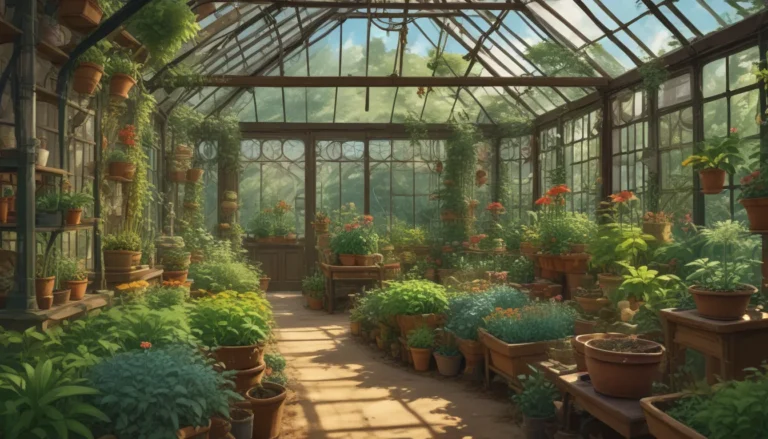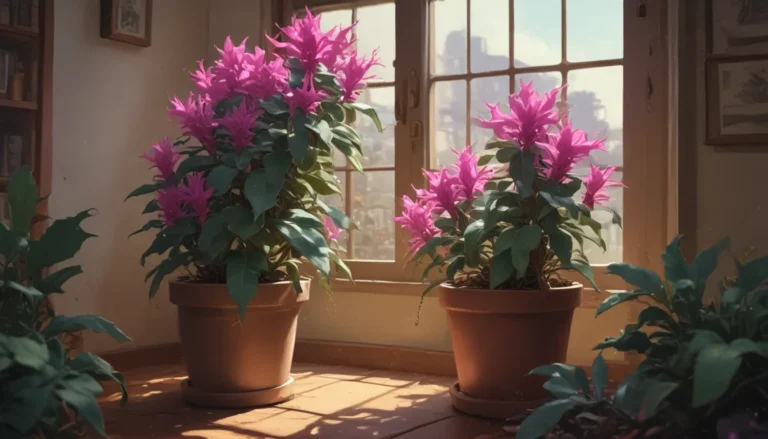Growing and Caring for Impatiens: A Comprehensive Guide

Are you looking to add a pop of color to that shady corner in your yard? Look no further than impatiens! These vibrant, easy-to-care-for plants can brighten up even the darkest spots with their colorful blooms. In this in-depth guide, we’ll cover everything you need to know about growing and caring for impatiens to ensure they thrive in your garden.
The Fascinating World of Impatiens
Originally hailing from eastern Africa, Impatiens walleriana, also known as jewelweed, busy Lizzie, patience, or touch-me-not, is the impatiens species we commonly find in gardens. These plants are part of a diverse genus that includes varieties like Kashmir balsam, garden balsam, and New Guinea impatiens, each with its unique characteristics and colors ranging from orange and pink to purple and white.
Impatiens are known for their impatient nature, as their seeds burst open with the slightest touch, scattering themselves in the process. These plants can grow anywhere from 10 inches to three feet tall, depending on the cultivar.
Propagation Made Easy
Whether you prefer starting from seed, rooting cuttings, or purchasing seedlings, impatiens are versatile plants. Here are some tips on how you can propagate these beauties:
-
From Seed: Start seeds indoors about 12 weeks before the last frost date. Keep the soil moist and provide them with bright, indirect sunlight until they sprout. Thin out the seedlings as needed and transplant them outdoors once they have two true leaves.
-
From Cuttings: Cut a three-inch stem, dip it in rooting hormone, and plant it in a pot filled with seed-starting mix. Keep the cutting in a bright, indirect light, ensuring the soil remains moist. Once roots form, harden off the cutting and plant it in the ground.
-
From Seedlings/Transplanting: Purchase seedlings or six-packs from nurseries and plant them in rich, well-draining soil once the threat of frost has passed. Water them regularly and watch them thrive.
Cultivars That Stand Out
Impatiens come in a variety of cultivars, each offering something unique in terms of colors and growth habits. Some popular series include:
-
Accent: Known for their large flowers, the Accent series offers vibrant colors and compact growth habits, making them perfect for garden accents.
-
Beacon: This series is resistant to downy mildew, making it a reliable choice for those worried about the disease. They come in a range of colors and sizes, perfect for adding a splash of color to any garden.
-
Imara XDR: With extra disease resistance, the Imara XDR series boasts stunning flowers in various colors, making them a strong choice for disease-prone areas.
Explore these and other cultivars to find the perfect impatiens for your garden.
Managing Pests and Disease
While impatiens are relatively low-maintenance, they can still fall prey to pests and diseases. Here are some common issues to watch out for:
-
Herbivores: Deer and rabbits are common pests that love impatiens. Protect your plants from these critters by using deterrents or barriers.
-
Insects and Mites: Aphids, spider mites, and thrips can infest your impatiens, especially during stress. Keep your plants healthy with proper watering and feeding to prevent infestations.
-
Disease: Downy mildew is a significant concern for impatiens. Look out for symptoms like silvery-white mold on leaves and take action immediately to prevent its spread. Choose resistant cultivars and practice good hygiene to keep diseases at bay.
Best Uses for Impatiens
Impatiens excel as bedding plants, border options, and container plants. They thrive under trees, in shaded areas, and in spots that need a burst of color. You can even eat the flowers, adding them to salads or desserts for a touch of whimsy.
Quick Reference Growing Guide
Here’s a quick snapshot of growing impatiens:
- Plant Type: Annual flower
- Flower/Foliage Color: Various
- Native to: Eastern Africa
- Hardiness (USDA Zone): 2-11
- Exposure: Partial sun, partial shade
- Time to Maturity: 12 weeks
- Water Needs: High
- Spacing: 12 inches
- Height: Up to 3 feet
- Spread: Up to 1 foot
- Common Pests and Diseases: Deer, rabbits; aphids, spider mites, thrips; various diseases
Impatiens Are Ready for Their Big Comeback
Despite facing challenges like downy mildew, impatiens are making a strong comeback with new cultivars and resistant hybrids. By following proper care techniques and choosing the right varieties, you can enjoy the beauty of impatiens in your garden once again.
Have you tried growing impatiens in your garden? Which cultivars are your favorites? Share your experiences and tips in the comments below.
Remember, with a little care and attention, impatiens can add a vibrant touch to your garden, even in the shadiest spots!





